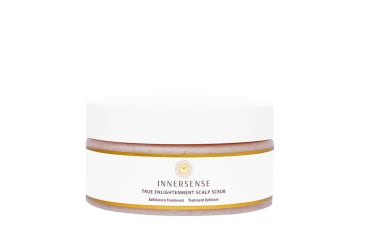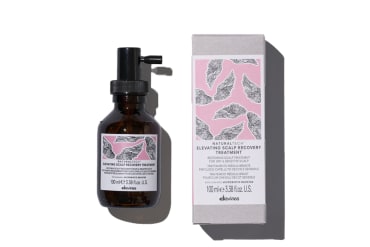One area that’s recently entered the spotlight in this realm: the scalp. While many people equate a healthy scalp to healthy hair, there’s much more to this nuanced topic than meets the eye. It is true that a healthy scalp encourages healthy hair, but that’s not all. The scalp is its own beast to tackle, and it requires much different care than the hair. In fact, you should view your scalp as an extension of the face rather than the base of your strands. There are plenty of resources to learn about skin care routines, regimens, products, and treatments out there—but scalp care resources are lacking. Here, a full breakdown of everything you need to know about scalp care from the experts who study scalps and hair care product ingredients every single day. While your goal with hair care is to encourage strong, soft strands, you’re aiming for something completely different when it comes to the scalp. As certified trichologist and founder of scalp-first hair care brand Act+Acre Helen Reavey puts it, “The goal is to balance the scalp microbiome and keep it in homeostasis.” When your scalp is healthy, the following processes can run smoothly: Reslan recommends sectioning the hair and looking closely at the scalp in the mirror. Ask yourself the following questions to guide your at-home scalp exam: Can I see product buildup around the follicle? Is there any redness or irritation? Are there any flakes? “Flakes could mean that you have an oil buildup or the opposite, that you’re drying out your scalp. Or, it could be related to the environment or products you’re using,” she says. So it’s safe to say, using a dandruff shampoo the second you see a flake on the scalp isn’t going to solve every problem. Hair and scalp oils are different from scalp serums. The latter is meant to stay in your hair without feeling greasy or leaving residue. These serums can aid in hair growth, help combat dry patches on the scalp, and overall contribute to microbiome balance. When you apply a scalp serum, do so to a clean scalp. Be sure to separate your hair with a comb and apply the serum to your entire scalp. After you apply, massage the serum into the scalp to ensure it absorbs. Pay special attention to any problem areas. If you are taking proper care of your scalp, then these styles won’t be as dangerous, as your scalp will be stronger and more resilient. Nevertheless, try not to make this an everyday occurrence. Everyone’s scalp is different and thus, can tolerate different styles. Simply pay attention to your scalp’s state, especially around the hairline and base of the ponytail or braid, to catch any early signs of hair loss if you want to continue wearing these styles safely. If you prefer a scalp massage tool instead, by all means, use what you like. Do note, however, that some of these massagers can be made of hard plastic and actually damage the skin on the scalp. Your hands can serve as an adequate tool that’s just as effective and less risky than using a hard, aggressive tool. There are tons of products on the market for this exact purpose—here’s a list of our top 8 scalp sunscreens for your browsing pleasure. You can visit a trichologist for a scalp examination or visit your dermatologist to discuss possible in-office treatments or, if necessary, prescription-grade products. Simply separate your hair into sections, run some oil down the part, massage, and repeat. This can be a mindful practice that doubles as a moment of peace and a dedicated act of self-care. If you can, leave the oil in your hair for a few hours or overnight to increase absorption. This will also help prevent breakage on the strand where the tie is fastened. This step serves as a best practice for your hair and for your scalp.












